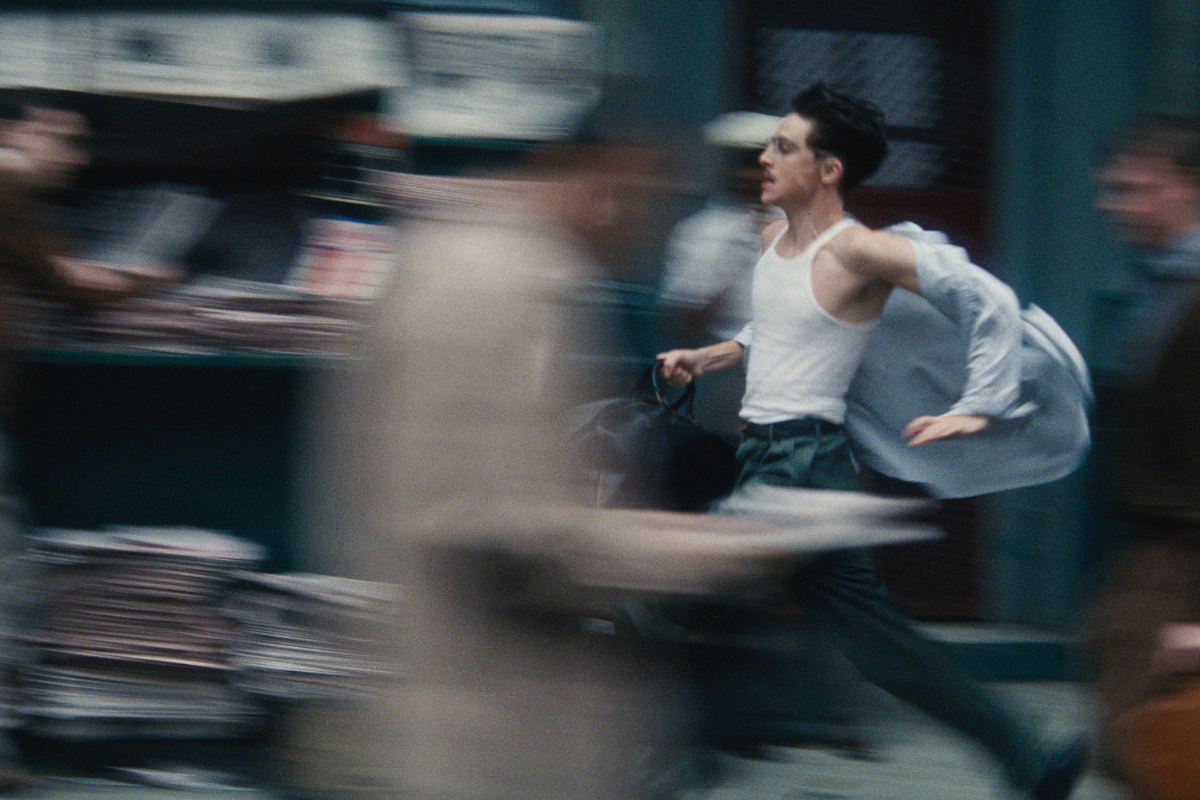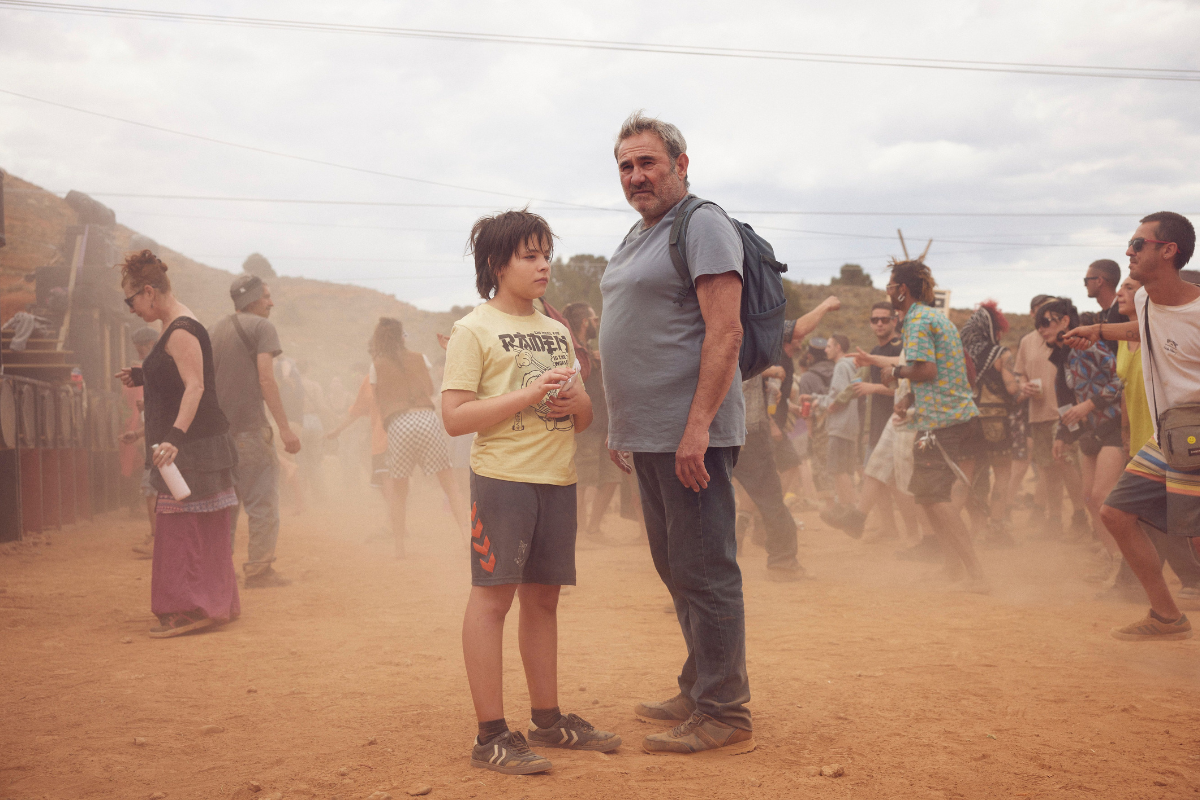UNDERSTANDING SCREENWRITING: Secrets, Secrets. And More Secrets.
Shh! Tom is dealing with three movies which deal with secrets in very different ways: ‘Operation Mincemeat,’ ‘The 355,’ and ‘The Lost Daughter’.
What We Think We Know Now About William Martin.
Operation Mincemeat (2021. Screenplay by Michelle Ashford, based on the book by Ben Macintyre. 128 minutes) and The Man Who Never Was (1956. Screenplay by Nigel Balchin, based on the book by Ewen Montagu. 103 minutes)
By early 1943 the Allies had driven the Germans out of North Africa (yes, we are in World War II). The Allies were not yet prepared to launch a full-scale attack on Europe; that would come a year later. But our guys still wanted to put pressure on the Germans. The obvious choice was what Winston Churchill called the “soft underbelly of Europe,” i.e., somewhere in the Mediterranean. The obvious target was Sicily, from where the Allies could jump off to Italy. If it was obvious to us, it was also obvious to the Germans, who sent extra troops to Sicily. So the problem for the British tricksters was how to convince the Germans that the attack was going to come in Greece.
Most of what the Brits tried failed to convince. So they came up with a truly hare-brained scheme. They would find a dead body, dress him up as an officer in the Royal Marines, attach a briefcase with documents that dealt with the proposed attack on Greece, and put him in the waters off the coast of Spain, where he would float ashore at a town where the Brits knew the Germans had one of their top spies. Hare-brained yes, but it worked.
In 1950 Duff Cooper, the former First Lord of the Admiralty, published a novel, Operation Heartbreak, which was clearly based on Operation Mincemeat. British Intelligence was furious one of their deception tricks had been given away and threatened to have Cooper accused of revealing government secrets. They asked Cooper where he got the information about the operation. He said that Winston Churchill had told him about it. Nobody wanted to bring the former prime minister up on charges.
British intelligence felt they should get the true story of the operation made public, so they asked Ewen Montagu, who ran the operation, to write a non-fiction account. He did, but with severe limitations on what he could reveal. For example, he could not mention that the Brits had broken the German Enigma code machine and were reading most of the upper-level secret papers of the Germans.
Montagu’s book was a best seller and bought for the movies by 20th Century-Fox. Nunnally Johnson worked on a script for a while, but realized there was only about an hour’s worth of material, not enough for a feature. The British screenwriter hired was Nigel Balchin, who solved the length problem by adding a German spy sent to England to find out if “William Martin” was real. These scenes are historically inaccurate, but make for a reasonably suspenseful second half of the film.
Darryl Zanuck, the head of the studio, insisted on casting Clifton Webb as Montagu. Webb was born in Indiana, but could be convincingly British. Ronald Neame, who directed the film, said in his memoirs that “Certainly he could bring the proper arrogance and impeccable British accent to the role of Montagu.”
The Man Who Never Was, released in 1956, was a successful film and is fondly remembered by those who saw it.
Ten years ago Ben Macintyre, a British author who specializes in non-fiction books about espionage, published Operation Mincemeat. It tells the story, but with additional research and the availability of a lot of the formerly secret material that Montagu and the filmmakers in 1956 could not use. Macintyre was also able to look at Nazi documents and follow what happened to the body and the briefcase after it landed in Spain. Not all the German Intelligence people were convinced of its authenticity. One immediately recognized it was a fake, but he was so disillusioned by Hitler and the Nazis that he agreed with the others that it was real.
The screenwriter on the new film Operation Mincemeat is Michelle Ashford, whose credits include two episodes of the miniseries The Pacific (2010) and the development of Masters of Sex (2014-2016). After a few shots of the body in the water, she takes us to a party at which we are introduced to Ewen Montagu. He is sending his wife and kids off to the United States, presumably for the duration of the war. There is obviously some tension between them. What, have we stumbled into a soap opera?
Not exactly, but Ashford does pay attention to the personal side of the characters, more than Balchin did. Partly that is because she has changed who Montagu’s co-worker is. In Man he was “George Acres,” a completely fictional character, nicely played in counterbalance to Clifton Webb’s Montagu. Here the equivalent character is the real-life Charles Cholmondeley, who does not appear at all in Man. Late in the credits of Operation there is a thanks to the Cholmondeley family, so I suspect the family wanted Ashford to give him the credit the other film and books did not. It was Cholmondeley, after all, who came up with the plan in the first place.
Montagu is played in the new film by Colin Firth, without the “proper arrogance” Webb had, and his Montagu’s relationship with Cholmondeley is tenser than Webb’s was with Robert Flemyng’s Acres, and not nearly as much fun. The problem is that these personal elements take us out of the main story, which is much more interesting. Ashford does get down to the mechanics of the operation, which are generally well-handled. Joe Wright, the director, realizes he cannot top the best scene in Man. Montagu and Acres are filling “Martin’s” pockets and briefcase with all the items they have prepared. Neame just sits the camera down and in one take watches the two men go about their business. Wright’s version is quicker, but not as compelling.
The pace begins to pick up when the body is put in the water. In Macintye’s book, there is a long section in which we follow the reports up the German chain of command. My concern was that it would be a problem for us to lose the main characters and follow characters we do not know, and since they are Nazis, do not care about. Ashford goes nicely back and forth between our guys waiting it out and the bad guys going about their business. Here Ashford is helped by the fact that she can refer to the messages coming in from Bletchley Park, where the code breakers are decoding and sending on what they are finding out the Germans are thinking and doing. There are two young women in our guys’ office whose sole job is to relay the information. Ashford could have done more than she has with them, but it may be in 2022 we know too much about the code-breaking for it to seem fresh.
The deception worked, Hitler withdrew some units from Sicily and sent them to Greece, so capturing Sicily was relatively easy. Capturing Italy was not.
There are at the end of the film several titles telling us what happened to the people involved. Some of them may even be true.
A January Movie with (Bleep)kicking Ladies.
The 355 (2022. Screenplay by Theresa Rebeck and Simon Kinberg, story by Theresa Rebeck. 122 minutes)
If you are a relatively new reader of this column, you may not be familiar with the term “a January movie.” That’s a lightweight, entertaining movie, usually an action picture, that serves as a palette cleanser after the ponderous awards-grovellers released in December. Liam Neeson developed a whole second career doing them.
In this case, the star is not a guy, but four major female stars: Jessica Chastain, Diane Kruger, Penélope Cruz, and Lupita Nyong’o, the last two Academy Award-winning actresses. I assume they got paid a bundle each, because the supporting cast are nearly all virtual unknowns because there was probably no money left in the casting budget after the stars were paid off.
The story and a bunch of the screenplay is by Theresa Rebeck, a playwright whose television credits include NYPD Blue and two Law & Order series, Criminal Intent and Criminal Mind. I suspect that the fact that the plot makes some sort of sense and each of the four women characters is fairly sharply defined comes from her. Simon Kinberg has mostly action film and TV credits, including Mr. and Mrs. Smith, and two X-Men movies. You can see my take on Mr. and Mrs. Smith here, which explains why I think the good stuff in the script comes from Rebeck, but Kinberg, who also directs, has a real feel for action scenes.
The MacGuffin in the film is a computer program that can destroy virtually anything in the world. The women are chasing after it. That’s really all you need to know about the plot.
The four main characters come from different backgrounds. Mace (Chastain) is a CIA agent who does not follow orders. The part uses Chastain’s strength and intelligence well. Marie (Kruger) is the muscle of the group who follows orders even less than Mace does. Kruger has never played anybody this tough and nasty before and it suits her. Kadujah (Nyong’o) is an MI6 friend of Mace’s. Kyong’o is totally convincing as the computer geek who is not a geek. Graciela (Cruz) is the odd duck. She is a psychologist who somehow gets caught up in the mess and provides a nice counterpoint to the others.
If you just want an enjoyable afternoon with four terrific actresses having a lot of fun and a lot of people shooting other people, this is the movie for you.
Rookie Mistakes.
The Lost Daughter (2021. Screenplay by Maggie Gyllenhaal, based on the novel by Elena Ferrante. 121 minutes)
Maggie Gyllenhaal is one of our great actresses. She wrote and directed one episode of the TV series Homemade, but this is her first feature as both writer and director. She makes rookie mistakes in both roles.
Part of the problem is that there appears to be only about half an hour of story material in the novel. Leda, an English professor, goes on a holiday to a Greek island. She finds one group of other tourists irritating, but finds the daughter of one of them when the little girl gets lost. This reminds Leda of her younger days when she had two small children who were constantly interrupting her at work. We learn later she abandoned them.
Gyllenhaal drags out the scenes. After Leda upsets one of the other tourists by not moving her beach chair, Leda and the woman have a long conversation that, like many conversations in the film, goes nowhere. Since movies take place in time, we expect the film to be moving forward as time passes. This one does not. There are scenes that may have been interesting to read in the novel, but are not particularly interesting to watch on screen.
The younger Leda gets involved in a romantic affair with another professor, and we get the impression that he is why she abandoned her children. There has been some talk about how perceptive this film is about women’s lives, but leaving her kids for a lover is very conventional (see Anna Karenina for example). I was rather suspicious about this subplot, since it appears that Leda has at least a couple of pleasant phone conversations with one of her grown daughters at various times in the film. If you really wanted to deal with a woman and the pressures of being a mother, they might have been better off by having Leda leave them so she can get on with the work she is doing. And here’s a spoiler alert: we find out later that Leda was only apart from her kids for three years. She may feel bad about that now, but as I mentioned, she and her kids seem to have gotten over it all. (The plot summary on IMDb says that the kids went off to Canada with their father, a point not mentioned at all in the film.)
So those are the screenwriting rookie mistakes. The directing rookie mistake is that Gyllenhaal drags out the scenes forever, which a lot of directors do on their first film. I suggested in the last column going to see Nightmare Alley, writing down a scene, and then condensing it to what you need. You can do the same thing here, although here you will find in many scenes there are not that many things you need.
I suspect that Gyllenhaal, as an actor herself, wants to give the actors as much time as they want. DO NOT DO THAT. Actors will take forever if you let them. Gyllenhaal has a wonderful cast, but she indulges them too much. Leda is played by Olivia Coleman, and you can see her struggling to do something, anything, in a lot of shots.
Barbara “Bobbie” McLean, the great film editor at 20th Century-Fox, complained of actors who took so much time with their lines she could not cut the picture as quickly as she and Darryl Zanuck liked. One of the greatest offenders was Lee J. Cobb, whom Bobbie called “old slow-trot.” Look at the Capra and Preston Sturges films of the thirties and forties to see how fast you can get an actor to go. I am not sure I would want Gyllenhaal to push her actors that fast in this movie, but if she had been more precise in the script, she could have picked up the pace of the acting.
Learn more about the craft and business of screenwriting from our Script University courses!
Tom Stempel is a Professor Emeritus at Los Angeles City College, where he taught film history and screenwriting from 1971 to 2011. He has written six books on film, five of them about screen and television writing. You can learn more about his books here. His 2008 book Understanding Screenwriting: Learning from Good, Not-Quite-So- Good, and Bad Screenplays evolved into this column. The column first appeared in 2008 at the blog The House Next Door, then at Slant, and then Creative Screenwriting before it found its forever home at Script.
In the column he reviews movies and television from the standpoint of screenwriting. He looks at new movies, old movies, and television movies and shows, as well as writing occasional other items, such as appreciations of screenwriters who have passed away, plays based on films, books on screenwriting and screenwriters, and other sundries.
In September 2023 Tom Stempel was awarded the inaugural Lifetime Achievement in the Service of Screenwriting Research by the international organization the Screenwriting Research Network.






